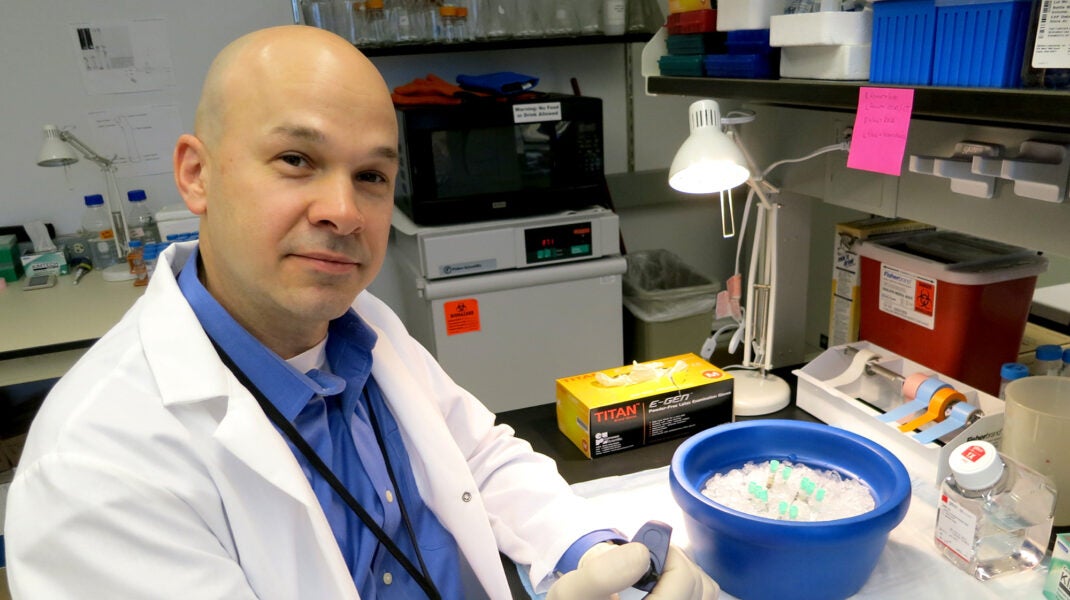 Charles Farber, PhD, director of the UVA Center for Public Health Genomics, received a new multi-PI R01 grant with Dr. Rick Sumner at Rush University. The $3.8 M grant (total cost over 5 years) is for a project entitled “Systems Genetics of Bone Regeneration.”
Charles Farber, PhD, director of the UVA Center for Public Health Genomics, received a new multi-PI R01 grant with Dr. Rick Sumner at Rush University. The $3.8 M grant (total cost over 5 years) is for a project entitled “Systems Genetics of Bone Regeneration.”
Project Summary
There are over 1 million cases of failed bone repair in the U.S. annually, resulting in substantial patient morbidity and societal costs. The genetic factors affecting bone repair are poorly understood because the field has been limited by having to rely on interrogating genes with known relevance for osteoporosis or other biological processes such as inflammation. These studies have identified only a handful of genes. In contrast, systems genetics studies of many phenotypes including skeletal traits such as bone mineral density have already identified multiple novel genetic variants that can be targeted for therapeutic intervention. Unfortunately, the study of bone repair in patients is not readily amenable to this approach because of the difficulty in enrolling patients in studies after the occurrence of the index event, great variability in injury types and lack of simple readouts to assess repair. These barriers can be overcome by using a model organism with a well-defined injury mechanism and simple readout to characterize the repair phenotype. Thus, we will use systems genetics to discover novel genes influencing intramembranous bone regeneration induced by marrow ablation in a mouse model. Intramembranous bone repair is integral to fracture healing, distraction osteogenesis, fixation of orthopedic and dental implants to the skeleton and repair of large defects caused by trauma or necessitated by resection of bone tumors. In Aim 1, we will perform the first genome-wide association study (GWAS) for bone repair by measuring the intramembranous bone regenerative response after marrow ablation in Diversity Outbred (N=1000) mice. We will identify genes responsible for bone regeneration quantitative trait loci (QTL) and expression QTL using multiple fine-mapping approaches and transcriptomic data generated from single cell RNA-seq. In Aim 2, we will use Bayesian networks and identify genes highly connected to known regulators of bone traits using Key Driver Analysis to identify candidate causal genes for the bone regenerative response. In Aim 3, we will validate the role of Periostin, a recently identified candidate gene, and at least one additional candidate identified in the first two aims. We will begin by testing the role of Periostin, a gene implicated in intramembranous bone regeneration in preliminary transcriptomic, lineage tracing and key driver analyses. The project will significantly increase our understanding of the genetics of bone repair. Genes that we identify will serve as potential therapeutic targets capable of improving multiple orthopedic and dental procedures which rely on bone repair.
